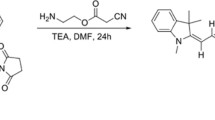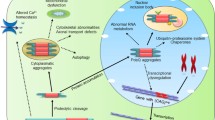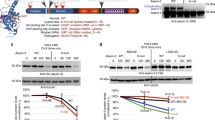Abstract
Transglutaminases (TGs) comprise a family of Ca2+-dependent enzymes that catalyze protein cross-linking, which include nine family members in humans but only a single homolog in Drosophila with three conserved domains. Drosophila Tg plays important roles in cuticle morphogenesis, hemolymph clotting, and innate immunity. Mammalian tissue TG (TG2) is involved in polyglutamine diseases (polyQ diseases), and TG6 has been identified as a causative gene of a novel spinocerebellar ataxia, SCA35. Using a well-established SCA3 fly model, we found that RNA interference-mediated suppression of Tg aggravated polyQ-induced neurodegenerative phenotypes. The administration of cystamine, a known effective Tg inhibitor, enhanced ommatidial degeneration in SCA3 flies. We also demonstrated that the aggregates of pathogenic ataxin-3 increased greatly, when the Tg activity was repressed. These findings indicate that Tg is crucial for polyQ-induced neurotoxicity because Tg ablation resulted in more severe neurodegeneration due to the elevated accumulation of insoluble ataxin-3 complexes in the SCA3 Drosophila model.



Similar content being viewed by others
References
Agrawal N, Pallos J, Slepko N, Apostol BL, Bodai L, Chang LW, Chiang AS, Thompson LM, Marsh JL (2005) Identification of combinatorial drug regimens for treatment of Huntington’s disease using Drosophila. Proc Natl Acad Sci USA 102(10):3777–3781
Apostol BL, Kazantsev A, Raffioni S, Illes K, Pallos J, Bodai L, Slepko N, Bear JE, Gertler FB, Hersch S, Housman DE, Marsh JL, Thompson LM (2003) A cell-based assay for aggregation inhibitors as therapeutics of polyglutamine-repeat disease and validation in Drosophila. Proc Natl Acad Sci USA 100(10):5950–5955
Bailey CD, Johnson GV (2005) Tissue transglutaminase contributes to disease progression in the R6/2 Huntington’s disease mouse model via aggregate-independent mechanisms. J Neurochem 92(1):83–92
Bakker EN, Pistea A, VanBavel E (2008) Transglutaminases in vascular biology: relevance for vascular remodeling and atherosclerosis. Vasc Res 45(4):271–278
Bilen J, Bonini NM (2007) Genome-wide screen for modifiers of ataxin-3 neurodegeneration in Drosophila. PLoS Genet 3(10):1950–1964
Boroughs LK, Antonyak MA, Cerione RA (2014) A novel mechanism by which tissue transglutaminase activates signaling events that promote cell survival. J Biol Chem 289(14):10115–10125
Bortvedt SF, McLear JA, Messer A, Ahern-Rindell AJ, Wolfgang WJ (2010) Cystamine and intrabody co-treatment confers additional benefits in a fly model of Huntington’s disease. Neurobiol Dis 40(1):130–134
Bowness JM, Tarr AH, Wong T (1988) Increased transglutaminase activity during skin wound healing in rats. Biochim Biophys Acta 967(2):234–240
Chun W, Lesort M, Tucholski J, Ross CA, Johnson GV (2001) Tissue transglutaminase does not contribute to the formation of mutant huntingtin aggregates. J Cell Biol 153(1):25–34
Dedeoglu A, Kubilus JK, Jeitner TM, Matson SA, Bogdanov M, Kowall NW, Matson WR, Cooper AJ, Ratan RR, Beal MF, Hersch SM, Ferrante RJ (2002) Therapeutic effects of cystamine in a murine model of Huntington’s disease. J Neurosci 22(20):8942–8950
D’Eletto M, Farrace MG, Falasca L, Reali V, Oliverio S, Melino G, Griffin M, Fimia GM, Piacentini M (2009) Transglutaminase 2 is involved in autophagosome maturation. Autophagy 5(8):1145–1154
D’Eletto M, Farrace MG, Rossin F, Strappazzon F, Giacomo GD, Cecconi F, Melino G, Sepe S, Moreno S, Fimia GM, Falasca L, Nardacci R, Piacentini M (2012) Type 2 transglutaminase is involved in the autophagy-dependent clearance of ubiquitinated proteins. Cell Death Differ 19(7):1228–1238
D’Souza DR, Wei J, Shao Q, Hebert MD, Subramony SH, Vig PJ (2006) Tissue transglutaminase crosslinks ataxin-1: possible role in SCA1 pathogenesis. Neurosci Lett 409(1):5–9
Esposito C, Caputo I (2005) Mammalian transglutaminases. Identification of substrates as a key to physiological function and physiopathological relevance. FEBS J 272(3):615–631
Fesus L, Thomazy V, Falus A (1987) Induction and activation of tissue transglutaminase during programmed cell death. FEBS Lett 224(1):104–108
Grosso H, Mouradian MM (2012) Transglutaminase 2: biology, relevance to neurodegenerative diseases and therapeutic implications. Pharmacol Ther 133(3):392–410
Guan WJ, Wang JL, Liu YT, Ma YT, Zhou Y, Jiang H, Shen L, Guo JF, Xia K, Li JD, Tang BS (2013) Spinocerebellar ataxia type 35 (SCA35)-associated transglutaminase 6 mutants sensitize cells to apoptosis. Biochem Biophys Res Commun 430(2):780–786
Ichikawa A, Yamada A, Sakamoto H, Umehara M, Yoshioka Y, Yamaguchi M, Ikura K (2010) Overexpression of transglutaminase in the Drosophila wing imaginal disc induced an extra wing crossvein phenotype. Biosci Biotechnol Biochem 74(12):2494–2496
Ichikawa A, Kotaki M, Sahashi R, Yoshioka Y, Yamaguchi M, Ikura K (2011) Targeted overexpression of Drosophila transglutaminase-B induced characteristic phenotypes in a manner similar to transglutaminase-a. Biosci Biotechnol Biochem 75(7):1402–1404
Igarashi S, Koide R, Shimohata T, Yamada M, Hayashi Y, Takano H, Date H, Oyake M, Sato T, Sato A, Egawa S, Ikeuchi T, Tanaka H, Nakano R, Tanaka K, Hozumi I, Inuzuka T, Takahashi H, Tsuji S (1998) Suppression of aggregate formation and apoptosis by transglutaminase inhibitors in cells expressing truncated DRPLA protein with an expanded polyglutamine stretch. Nat Genet 18(2):111–117
Jeitner TM, Pinto JT, Krasnikov BF, Horswill M, Cooper AJ (2009) Transglutaminases and neurodegeneration. J Neurochem 109(Suppl 1):160–166
Karpuj MV, Becher MW, Springer JE, Chabas D, Youssef S, Pedotti R, Mitchell D, Steinman L (2002) Prolonged survival and decreased abnormal movements in transgenic model of Huntington disease, with administration of the transglutaminase inhibitor cystamine. Nat Med 2:143–149
Kornguth SE, Waelsch H (1963) Protein modification catalysed by transglutaminase. Nature 198:188–189
Kumar A, Kneynsberg A, Tucholski J, Perry G, van Groen T, Detloff PJ, Lesort M (2012) Tissue transglutaminase overexpression does not modify the disease phenotype of the R6/2 mouse model of Huntington’s disease. Exp Neurol 237(1):78–89
Lazarev VF, Sverchinskyi DV, Ippolitova MV, Stepanova AV, Guzhova IV, Margulis BA (2013) Factors affecting aggregate formation in cell models of huntington’s disease and amyotrophic lateral sclerosis. Acta Nat 5(2):81–89
Lesort M, Chun W, Johnson GV, Ferrante RJ (1999) Tissue transglutaminase is increased in Huntington’s disease brain. J Neurochem 73(5):2018–2027
Lin Y, Tang C, He H, Duan R (2013) Activation of mTOR ameliorates fragile X premutation rCGG repeat-mediated neurodegeneration. PLoS One 8(4):e62572
Lindgren M, Riazi R, Lesch C, Wilhelmsson C, Theopold U, Dushay MS (2008) Fondue and transglutaminase in the Drosophila larval clot. J Insect Physiol 54(3):586–592
Lorand JB, Urayama T, Lorand L (1966) Transglutaminase as a blood clotting enzyme. Biochem Biophys Res Commun 23(6):828–834
Mastroberardino PG, Iannicola C, Nardacci R, Bernassola F, De Laurenzi V, Melino G, Moreno S, Pavone F, Oliverio S, Fesus L, Piacentini M (2002) ‘Tissue’ transglutaminase ablation reduces neuronal death and prolongs survival in a mouse model of Huntington’s disease. Cell Death Differ 9(9):873–880
Menalled LB, Kudwa AE, Oakeshott S, Farrar A, Paterson N, Filippov I, Miller S, Kwan M, Olsen M, Beltran J, Torello J, Fitzpatrick J, Mushlin R, Cox K, McConnell K, Mazzella M, He D, Osborne GF, Al-Nackkash R, Bates GP, Tuunanen P, Lehtimaki K, Brunner D, Ghavami A, Ramboz S, Park L, Macdonald D, Munoz-Sanjuan I, Howland D (2014) Genetic deletion of transglutaminase 2 does not rescue the phenotypic deficits observed in R6/2 and zQ175 mouse models of Huntington’s disease. PLoS One 9(6):e99520
Menzies FM, Huebener J, Renna M, Bonin M, Riess O, Rubinsztein DC (2010) Autophagy induction reduces mutant ataxin-3 levels and toxicity in a mouse model of spinocerebellar ataxia type 3. Brain 133(Pt 1):93–104
Pandey UB, Nie Z, Batlevi Y, McCray BA, Ritson GP, Nedelsky NB, Schwartz SL, DiProspero NA, Knight MA, Schuldiner O, Padmanabhan R, Hild M, Berry DL, Garza D, Hubbert CC, Yao TP, Baehrecke EH, Taylor JP (2007) HDAC6 rescues neurodegeneration and provides an essential link between autophagy and the UPS. Nature 447(7146):859–863
Qurashi A, Liu H, Ray L, Nelson DL, Duan R, Jin P (2012) Chemical screen reveals small molecules suppressing fragile X premutation rCGG repeat-mediated neurodegeneration in Drosophila. Hum Mol Genet 21(9):2068–2075
Ravikumar B, Vacher C, Berger Z, Davies JE, Luo S, Oroz LG, Scaravilli F, Easton DF, Duden R, O’Kane CJ, Rubinsztein DC (2004) Inhibition of mTOR induces autophagy and reduces toxicity of polyglutamine expansions in fly and mouse models of Huntington disease. Nat Genet 36(6):585–595
Rice RH, Green H (1978) Relation of protein synthesis and transglutaminase activity to formation of the cross-linked envelope during terminal differentiation of the cultured human epidermal keratinocyte. J Cell Biol 76(3):705–711
Rossin F, D’Eletto M, Macdonald D, Farrace MG, Piacentini M (2012) TG2 transamidating activity acts as a reostat controlling the interplay between apoptosis and autophagy. Amino Acids 42(5):1793–1802
Sato K, Murakami T, Hamakawa Y, Kamada H, Nagano I, Shoji M, Takata H, Nobukuni K, Ihara Y, Namba R, Hayabara T, Hirose S, Abe K (2002) Selective colocalization of transglutaminase-like activity in ubiquitinated intranuclear inclusions of hereditary dentatorubral-pallidoluysian atrophy. Brain Res 952(2):327–330
Shibata T, Ariki S, Shinzawa N, Miyaji R, Suyama H, Sako M, Inomata N, Koshiba T, Kanuka H, Kawabata S (2010) Protein crosslinking by transglutaminase controls cuticle morphogenesis in Drosophila. PLoS One 5(10):e13477
Shibata T, Sekihara S, Fujikawa T, Miyaji R, Maki K, Ishihara T, Koshiba T, Kawabata S (2013) Transglutaminase-catalyzed protein-protein cross-linking suppresses the activity of the NF-κB-like transcription factor relish. Sci Signal 6(285):ra61
Steffan JS, Bodai L, Pallos J, Poelman M, McCampbell A, Apostol BL, Kazantsev A, Schmidt E, Zhu YZ, Greenwald M, Kurokawa R, Housman DE, Jackson GR, Marsh JL, Thompson LM (2001) Histone deacetylase inhibitors arrest polyglutamine-dependent neurodegeneration in Drosophila. Nature 413(6857):739–743
Theopold U, Krautz R, Dushay MS (2014) The Drosophila clotting system and its messages for mammals. Dev Comp Immunol 42(1):42–46
Umehara M, Ichikawa A, Sakamoto H, Yamada A, Yoshioka Y, Yamaguchi M, Ikura K (2010) Over-expression of transglutaminase in the Drosophila eye imaginal disc induces a rough eye phenotype. Mol Cell Biochem 342(1–2):223–232
Wang J, Wang CE, Orr A, Tydlacka S, Li SH, Li XJ (2008) Impaired ubiquitin-proteasome system activity in the synapses of Huntington’s disease mice. J Cell Biol 180(6):1177–1189
Wang JL, Yang X, Xia K, Hu ZM, Weng L, Jin X, Jiang H, Zhang P, Shen L, Guo JF, Li N, Li YR, Lei LF, Zhou J, Du J, Zhou YF, Pan Q, Wang J, Wang J, Li RQ, Tang BS (2010a) TGM6 identified as a novel causative gene of spinocerebellar ataxias using exome sequencing. Brain 133(Pt 12):3510–3518
Wang Z, Wilhelmsson C, Hyrsl P, Loof TG, Dobes P, Klupp M, Loseva O, Mörgelin M, Iklé J, Cripps RM, Herwald H, Theopold U (2010b) Pathogen entrapment by transglutaminase–a conserved early innate immune mechanism. PLoS Pathog 6(2):e1000763
Warrick JM, Paulson HL, Gray-Board GL, Bui QT, Fischbeck KH, Pittman RN, Bonini NM (1998) Expanded polyglutamine protein forms nuclear inclusions and causes neural degeneration in Drosophila. Cell 93(6):939–949
Warrick JM, Morabito LM, Bilen J, Gordesky-Gold B, Faust LZ, Paulson HL, Bonini NM (2005) Ataxin-3 suppresses polyglutamine neurodegeneration in Drosophila by a ubiquitin-associated mechanism. Mol Cell 18(1):37–48
Zainelli GM, Ross CA, Troncoso JC, Muma NA (2003) Transglutaminase cross-links in intranuclear inclusions in Huntington disease. J Neuropathol Exp Neurol 62(1):14–24
Acknowledgments
We would like to thank Dr. Beisha Tang for providing pertinent advice, sharing detailed information of SCA35 patients, and giving great inspiration, and Dr. Nancy M. Bonini for providing fly lines that express full-length versions of ataxin-3. We would also thank the Bloomington Drosophila Stock Center and the Vienna Drosophila RNAi Center for fly stocks. We thank Core Facility of Drosophila Resource and Technique, SIBCB, CAS for assistance with microinjection and Electron Microscope Room at the Hunan Normal University for assistance with SEM imaging. This work was supported in part by National Natural Science Foundation of China (Grant Number: 81071028, 81172513), Program for New Century Excellent Talents in University (Grant Number: NCET-10-0832), National Key Basic Research Program (973 program) (Grant Number: 2012CB944600), Hunan Provincial Innovation Foundation for Postgraduate (Grant Number: CX2013B091), and Scholarship for Excellent Doctoral Student in Central South University.
Conflict of interest
The authors declare that they have no conflict of interest.
Author information
Authors and Affiliations
Corresponding author
Rights and permissions
About this article
Cite this article
Lin, Y., He, H., Luo, Y. et al. Inhibition of Transglutaminase Exacerbates Polyglutamine-Induced Neurotoxicity by Increasing the Aggregation of Mutant Ataxin-3 in an SCA3 Drosophila Model. Neurotox Res 27, 259–267 (2015). https://doi.org/10.1007/s12640-014-9506-8
Received:
Revised:
Accepted:
Published:
Issue Date:
DOI: https://doi.org/10.1007/s12640-014-9506-8




